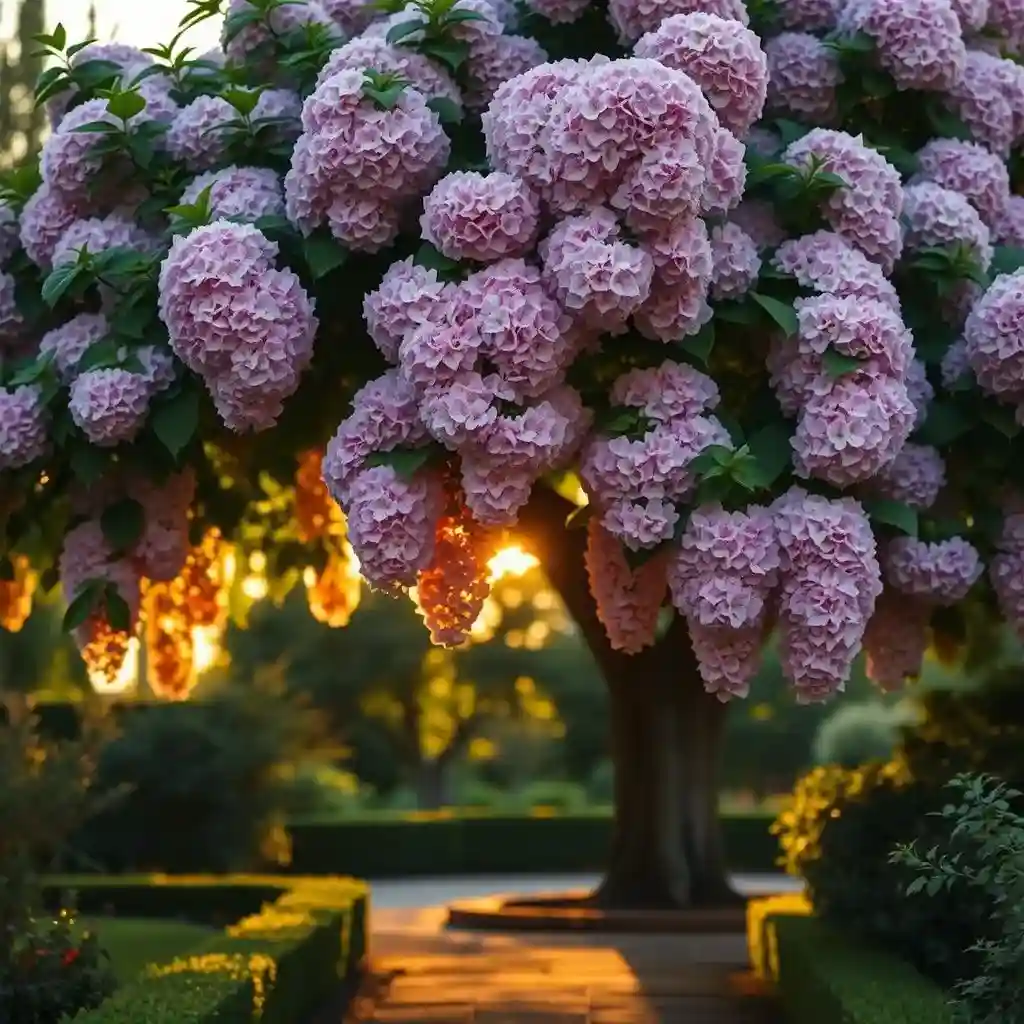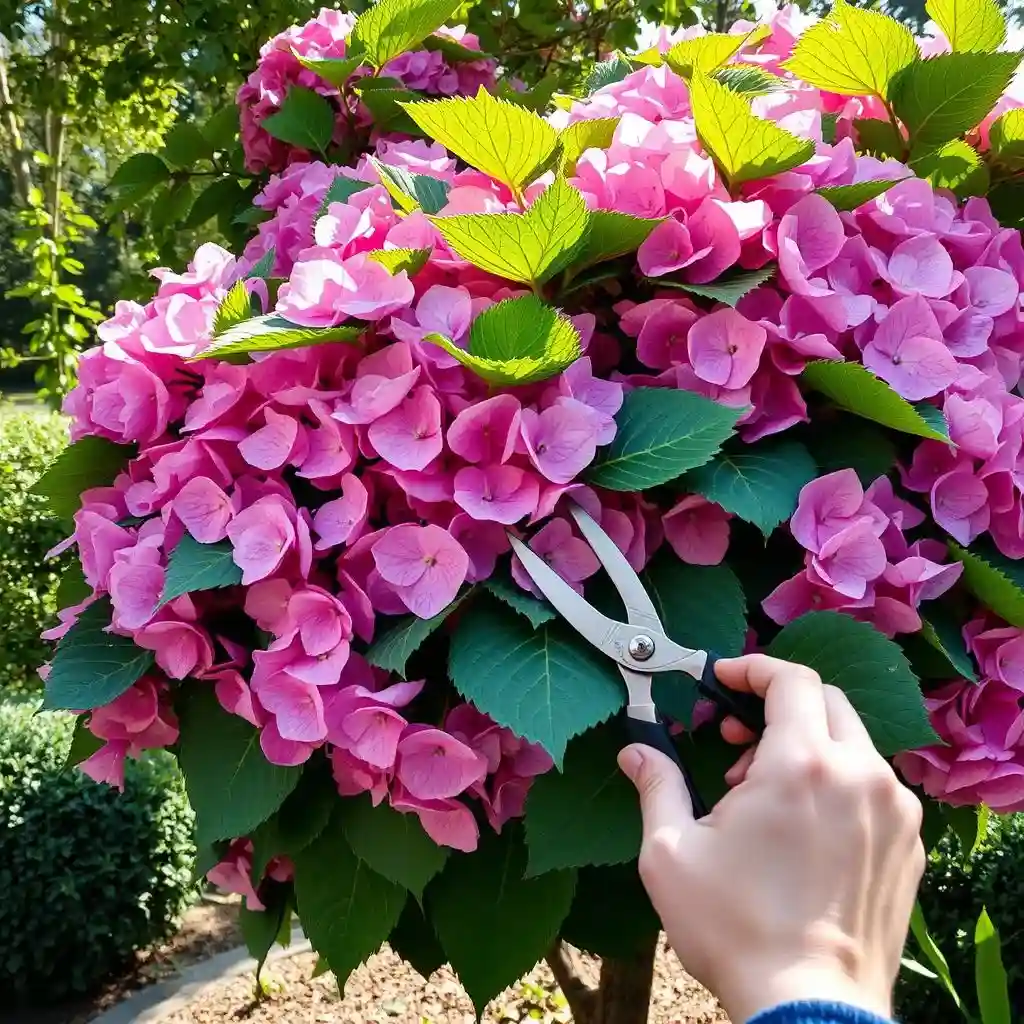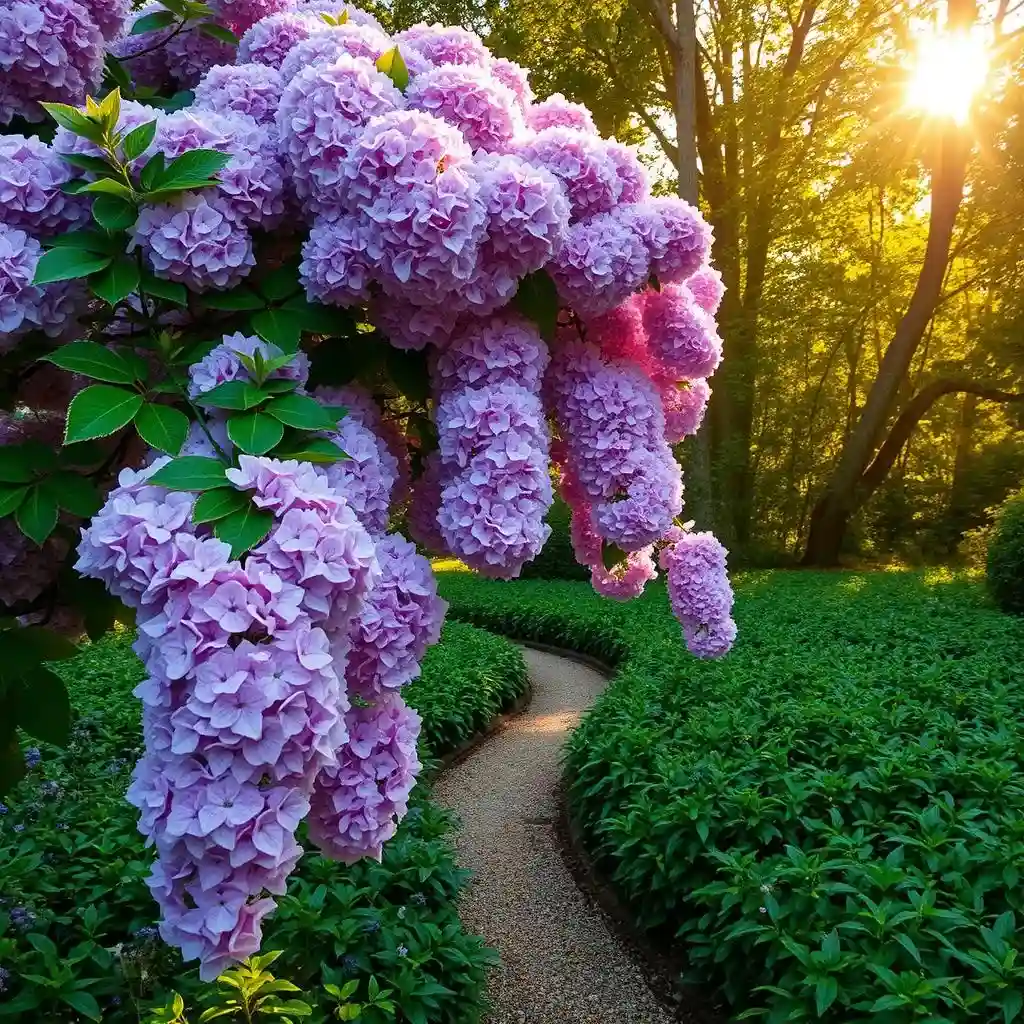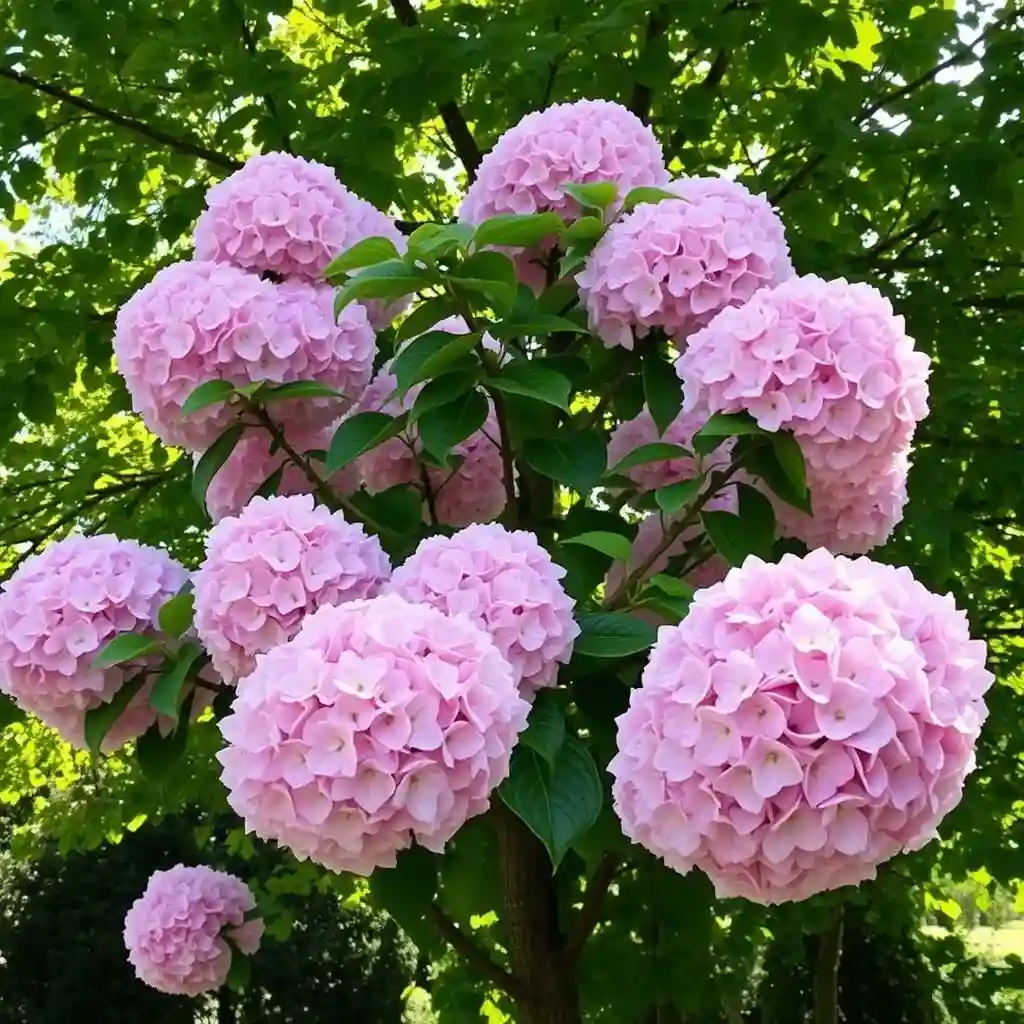Are you looking to add a stunning floral display to your garden? The Pinky Winky Hydrangea Tree is a beautiful and popular choice, known for its vibrant pink and white blooms.
To maximize its beauty, proper care and growing techniques are essential. This guide will walk you through the steps to grow and care for your Pinky Winky Hydrangea Tree, ensuring it thrives in your garden.
Key Takeaways
- Understand the growing conditions for the Pinky Winky Hydrangea Tree.
- Learn how to properly care for your tree.
- Discover tips to maximize its blooms.
- Find out how to protect your tree from common issues.
- Explore the benefits of having a Pinky Winky Hydrangea Tree in your garden.
All About the Pinky Winky Hydrangea Tree
The Pinky Winky Hydrangea Tree, a type of panicle hydrangea, is celebrated for its mid-summer blooms. As a popular choice among gardeners, understanding its characteristics is essential for optimal care.
Origin and Botanical Classification
The Pinky Winky Hydrangea Tree is a cultivar of Hydrangea paniculata, native to Asia and America. It is known for its hardiness and ability to thrive in various conditions. Botanically, it belongs to the family Hydrangeaceae. This classification helps in understanding its growth habits and requirements.
| Characteristic | Description |
| Botanical Name | Hydrangea paniculata ‘Pinky Winky’ |
| Family | Hydrangeaceae |
| Origin | Asia and America |
Distinctive Features and Blooming Pattern
The Pinky Winky Hydrangea Tree is distinguished by its large, conical flowers that bloom in mid-summer. These flowers are initially white and gradually turn pink as they mature, creating a striking two-tone effect. The blooming pattern is a key factor in its popularity, as it provides a dramatic display of color in the garden.
The tree’s robust growth and ability to bloom on new wood make it a low-maintenance option for gardeners. Its distinctive features and blooming pattern contribute to its appeal in landscape design.
Planting Your Hydrangea Tree

The success of your Pinky Winky Hydrangea Tree begins with proper planting techniques. This involves understanding the optimal time to plant, selecting the right location, and preparing the soil adequately.
Optimal Planting Season
The best time to plant a Pinky Winky Hydrangea Tree is during the fall or early spring. These seasons offer mild temperatures and ample moisture, which are ideal for the tree to establish its root system. Similar to the limelight hydrangea tree, the Pinky Winky Hydrangea benefits from being planted when it’s not too hot or cold.
Site Selection and Spacing Requirements
Choosing the right location is crucial. The Pinky Winky Hydrangea Tree prefers partial shade to full sun and well-draining soil. Ensure you plant it with enough space to grow, typically at least 3 to 5 feet away from other plants or structures. Proper spacing is key to healthy growth and air circulation.
Soil Preparation and pH Considerations
Soil preparation is vital. The Pinky Winky Hydrangea Tree thrives in slightly acidic to neutral soil pH (around 6.0-7.0). To prepare the soil, mix in organic matter like compost. A quote from a gardening expert highlights the importance of soil quality:
“The quality of your soil directly impacts the health and vigor of your plants.”
A simple soil test can guide your amendments.
| Soil pH | Soil Condition | Amendment |
| Below 6.0 | Too Acidic | Add Lime |
| 6.0-7.0 | Ideal | None Needed |
| Above 7.0 | Too Alkaline | Add Sulfur or Peat |
Essential Care for Pinky Winky Hydrangea Tree
The Pinky Winky Hydrangea Tree, like other hydrangea variants such as the vanilla strawberry hydrangea tree, requires specific care to thrive. Understanding its essential care requirements is vital for maintaining its health and promoting blooming.
Watering Schedule and Techniques
Water your Pinky Winky Hydrangea Tree regularly, ensuring the soil remains moist but not waterlogged. Deep watering once or twice a week is more effective than frequent shallow watering.
Sunlight Requirements
This hydrangea tree prefers partial shade to full sun. Ensure it receives at least 4-6 hours of direct sunlight daily for optimal blooming.
Fertilization Tips and Timing
Fertilize your Pinky Winky Hydrangea Tree in early spring with a balanced fertilizer. A second application after blooming can enhance growth.
| Care Aspect | Recommendation |
| Watering | Deep watering 1-2 times a week |
| Sunlight | 4-6 hours direct sunlight |
| Fertilization | Balanced fertilizer in spring and after blooming |
By following these care guidelines, you can enjoy a thriving Pinky Winky Hydrangea Tree with vibrant blooms.
Pruning Your Pinky Winky Hydrangea

Pruning is a crucial step in maintaining the health and aesthetic appeal of your Pinky Winky Hydrangea Tree. Regular pruning not only enhances the tree’s shape but also promotes vigorous blooming. To prune effectively, it’s essential to understand when and how to prune your tree.
Seasonal Pruning Timeline
The best time to prune your Pinky Winky Hydrangea Tree is in late winter or early spring, before new growth begins. This timing helps to minimize the risk of cutting off new buds that will produce flowers. Pruning in the fall can stimulate new growth that may not have time to harden off before winter, potentially damaging the tree.
- Remove dead or damaged branches at any time to maintain the tree’s health.
- Prune in late winter or early spring for shape and size control.
Proper Pruning Techniques for Shape and Vigor
To maintain the shape and vigor of your hydrangea tree, use the right pruning techniques. Start by removing any dead, diseased, or damaged branches. Then, thin out the center of the tree to allow for air circulation and sunlight penetration. Finally, shape the tree as desired, cutting back branches to a bud or a lateral branch.
Seasonal Maintenance Guide
To keep your Pinky Winky Hydrangea thriving, it’s essential to adjust your care routine with the seasons. Just like the limelight hydrangea tree, your Pinky Winky Hydrangea has different needs throughout the year.
Spring and Summer Care Routine
During the spring and summer, your Pinky Winky Hydrangea requires regular watering and fertilization. Ensure the soil remains moist but not waterlogged. Water your tree deeply once or twice a week, depending on weather conditions. You can also add a balanced fertilizer to promote healthy growth and blooming.
Fall Preparation Steps
As fall approaches, prepare your Pinky Winky Hydrangea for the colder months by cleaning up fallen leaves and debris. This will help prevent disease and pests. You should also stop fertilizing to allow the tree to harden off for winter.
Winter Protection Strategies
To protect your Pinky Winky Hydrangea from harsh winter conditions, apply a layer of mulch around the base. This will help insulate the roots and prevent damage from freezing temperatures. You can also consider wrapping the tree with burlap for added protection.
| Season | Care Tasks |
| Spring/Summer | Watering, Fertilization |
| Fall | Cleaning, Stop Fertilizing |
| Winter | Mulching, Wrapping with Burlap |
Landscaping with Pinky Winky Hydrangeas
Landscaping with Pinky Winky Hydrangeas can transform your outdoor space into a vibrant and inviting area. These beautiful trees can be used in various ways to enhance your garden’s aesthetic appeal.
Design Ideas and Companion Plants
The Pinky Winky Hydrangea Tree can be paired with other flowering plants like daylilies or coneflowers to create a dynamic landscape. Companion plants such as boxwood or holly can provide a nice contrast to the tree’s blooms.
- Daylilies
- Coneflowers
- Boxwood
- Holly
Container Growing Options
Growing your Pinky Winky Hydrangea Tree in a container is a great option for smaller gardens or patios. Ensure the container is large enough to accommodate the tree’s root system and provides good drainage.
Using containers also allows you to move the tree to different locations to optimize sunlight exposure or protect it from harsh weather conditions.
Troubleshooting Common Issues

Even with meticulous care, your Pinky Winky Hydrangea Tree may encounter issues that require prompt attention. Understanding how to identify and address these problems is crucial for maintaining the health and beauty of your tree.
Identifying and Managing Pests
Pests can significantly impact the well-being of your Pinky Winky Hydrangea Tree. Common pests include aphids, spider mites, and scale. To manage these pests, use insecticidal soap or neem oil. Regularly inspect your tree and maintain good garden hygiene to prevent infestations.
Disease Prevention and Treatment
Diseases such as powdery mildew and root rot can affect your hydrangea tree. Ensure good air circulation around the plant and avoid overhead watering to prevent fungal diseases. If disease is detected, treat with fungicides and remove any affected parts.
Addressing Growth and Blooming Problems
Growth and blooming issues can arise due to various factors. Ensure your tree receives adequate sunlight and water. Pruning correctly is also essential for promoting healthy growth and blooming.
Leaf Issues
Yellowing leaves may indicate nutrient deficiencies or watering issues. Adjust your care routine accordingly to address these problems.
Flower Problems
Poor blooming can result from insufficient sunlight or improper pruning. Ensure your Pinky Winky Hydrangea Tree receives enough sunlight and is pruned at the right time.
Caring for Your Pinky Winky Hydrangea Tree: A Summary
By now, you have a comprehensive understanding of how to grow and care for your Pinky Winky Hydrangea Tree. This beautiful tree requires attention to detail and a commitment to providing the right conditions to thrive. To recap, proper care involves planting it in the right location, watering it adequately, and pruning it seasonally.
As you continue to care for your Pinky Winky Hydrangea Tree, remember that its blooming pattern and overall health depend on your efforts. With the right care, you can enjoy its stunning blooms and robust foliage for years to come. By following the guidelines outlined in this article, you will be well on your way to becoming a successful Pinky Winky Hydrangea Tree caretaker.
Your efforts will be rewarded with a stunning display of flowers and a healthy, thriving tree that becomes a centerpiece in your garden or landscape.

